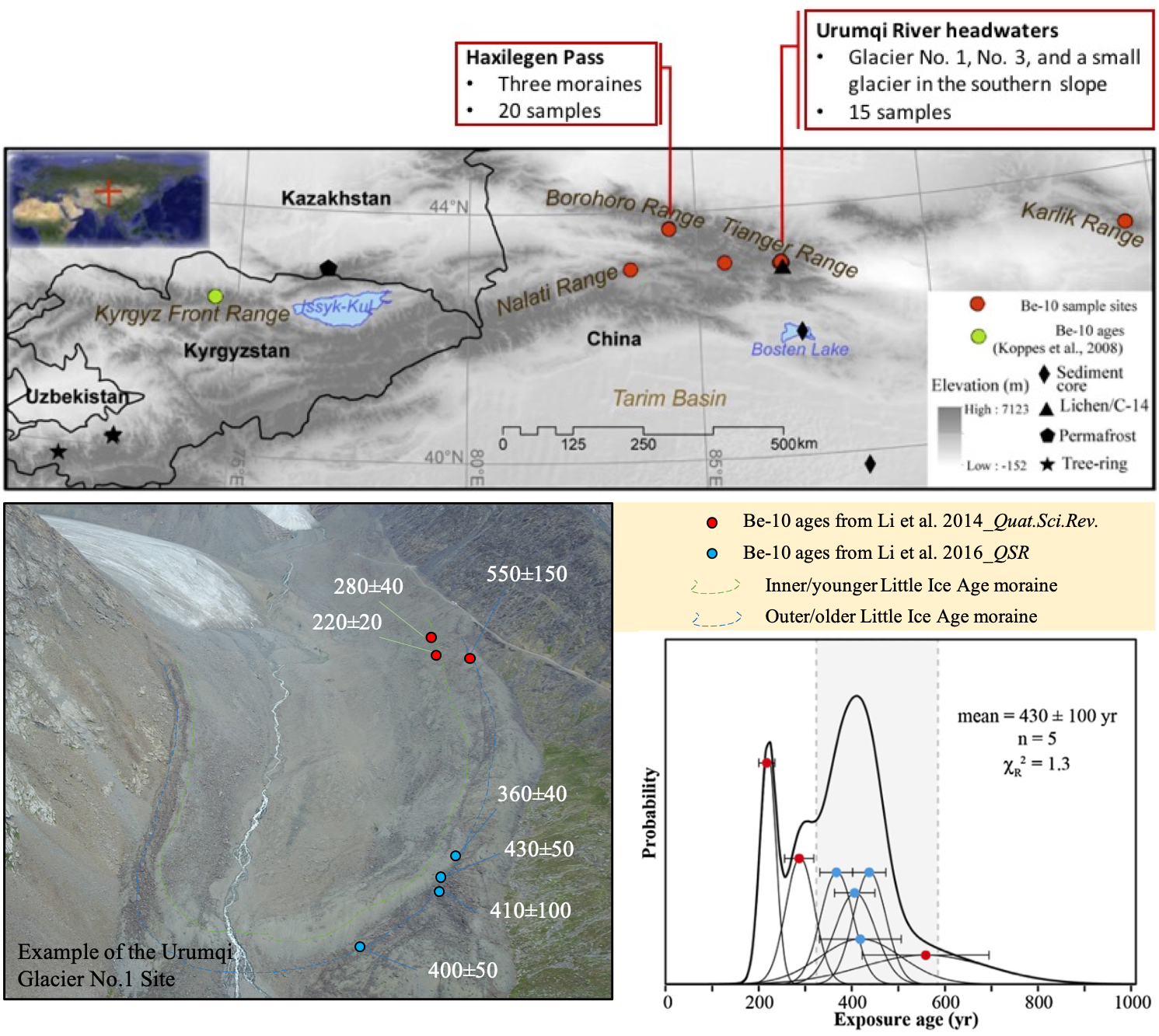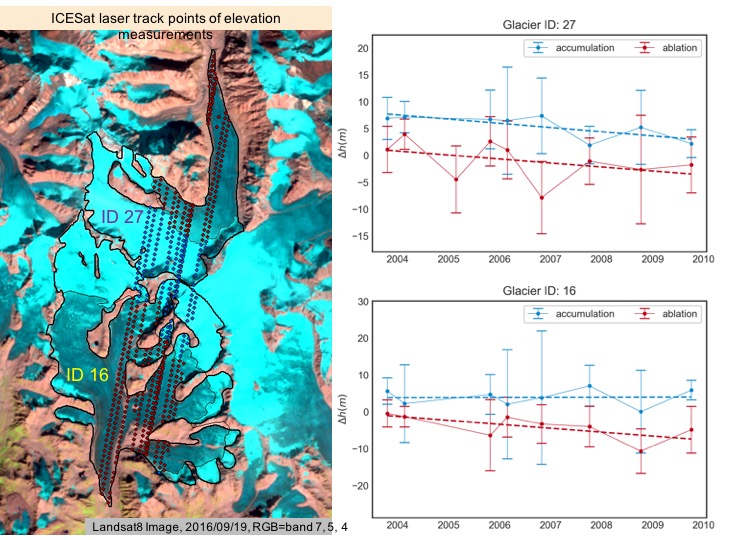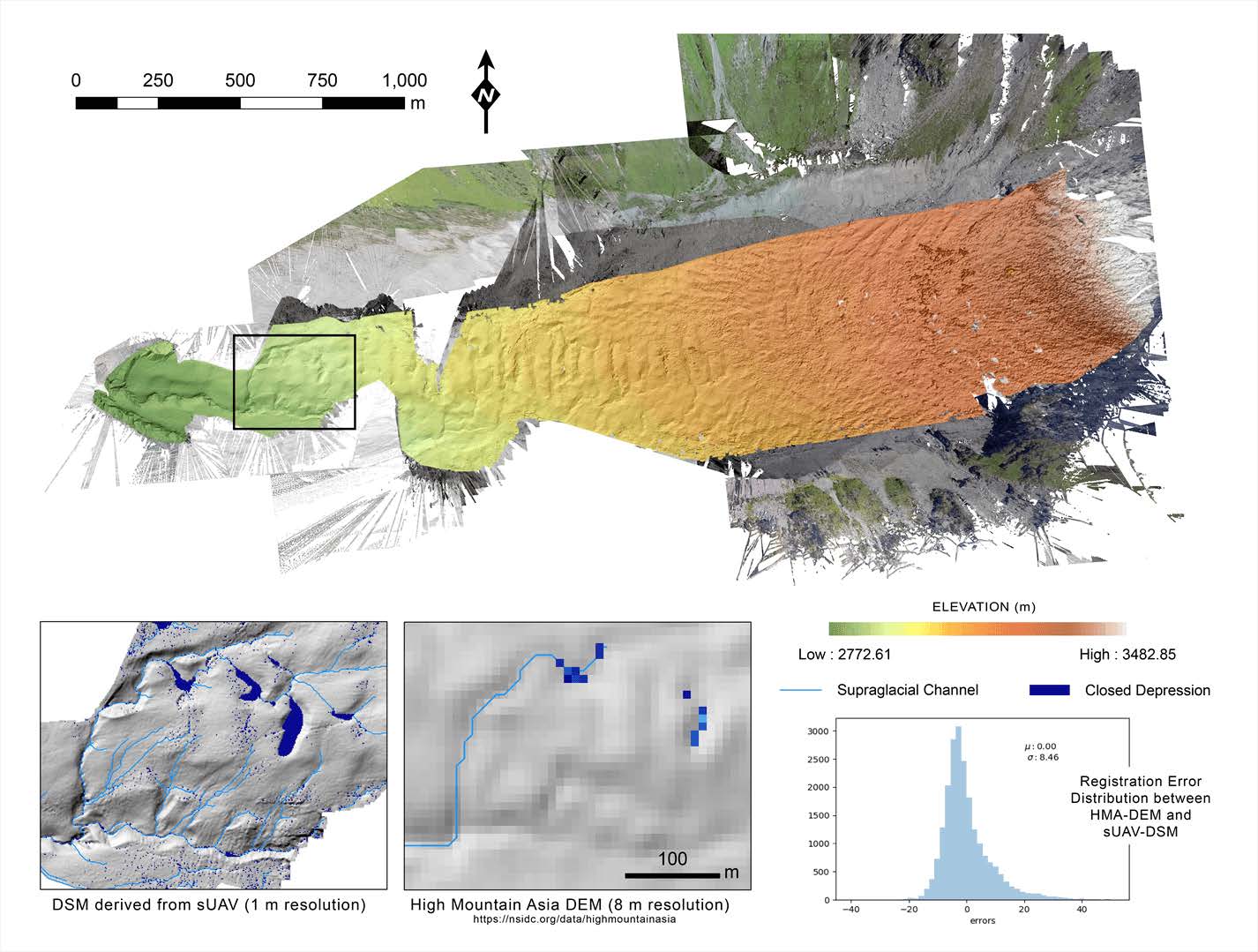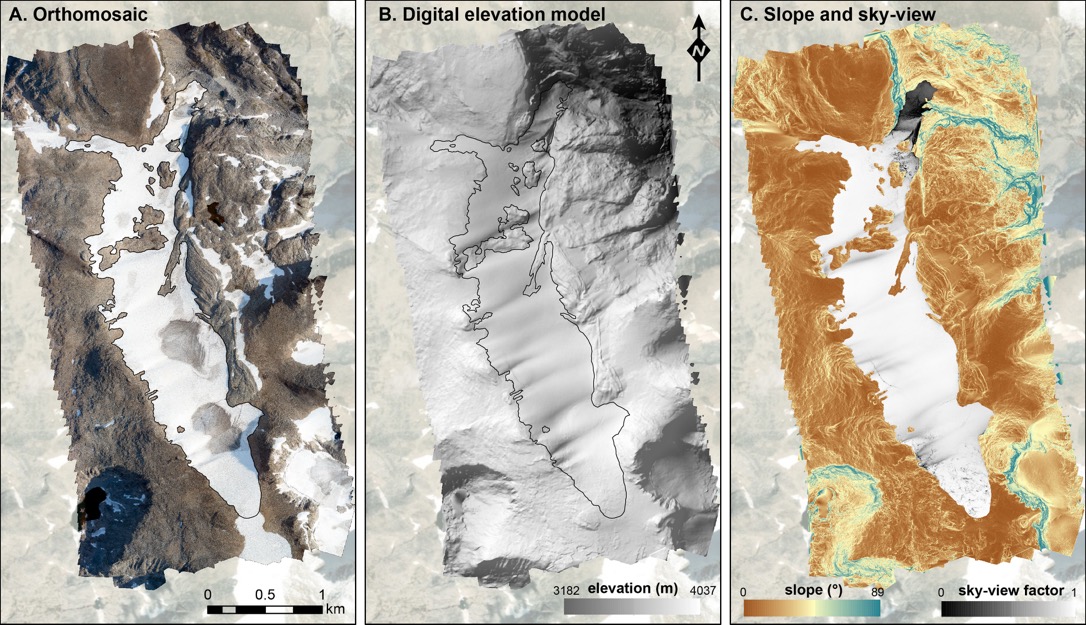Dr. Yanan "Nancy" Li
Department of Geography
College of Liberal Arts
Texas
State University
Research
Mountain glaciers are critical freshwater sources in semi-arid and arid regions, and due to their sensitivity to changes in temperature and precipitation, these glaciers are also reliable and unequivocal indicator of climate change. In order to better understand glaciers’ impact and response to climate change, we must know the current status and dynamics of the glaciers, as well as how they have changed in the past. My research focuses on glacial geomorphological mapping, reconstruction of the timing and extent of the past glaciations, and glacier changes in recent decades, currently emphasizing on high mountains in central Asia. I combine fieldwork, laboratory experiments, and computer-based analysis (GIS, statistics, and image processing) to conduct glacier studies over different time scales and across multiple spatial extents.
Cosmogenic nuclide dating of the Little Ice Age glacial extent in Tian Shan
Terrestrial cosmogenic nuclides (TCN) provide one of the ways to directly determine the timing of geomorphic events such as glacier advances and retreats. TCN analysis is based on the fact that new isotopes are building up in rock minerals over time when the Earth surface is constantly bombarded by cosmic rays. Through measurements of the newly-produced isotopes, commonly used ones like 10Be, 26Al, 36Cl, and 14C, we can figure out how long the sample has been exposed to the surface/cosmic rays. Although this surface exposure dating method is expensive, its rapid evolvement and numerous applications in recent decades have result in great contributions to glacier chronology and paleoclimate (Balco 2011).
Beginning in 2010, with an internationally collaborative team of Quaternary scientists, I opened my journey in glacial geomorphology and collected rock samples for establishing glacial chronology. I then have applied TCN dating to several study sites in the central and eastern Tian Shan, focusing on assigning the age and the sequential formations of the Little Ice Age (LIA) moraines. At least two glacial advances/retreats were discovered during the LIA period in the eastern Tian Shan: both at the Urumqi Glacier No. 1 site and the Haxilegen Pass site, the LIA maximum, represented by the outermost fresh moraine, is dated around 430 ± 110 yr, and a latter LIA glacial event formed an inner moraine and is dated about 270 ± 30 yr (link). Currently, I continue this line of research with samples collected at a new site in central Tian Shan.

Multi-proxy reconstruction of glacial history
Through collaboration with researchers at the Tibetan Institute of the Chinese Academy of Sciences, I am part of the NSF-China funded project “Multi-proxy study of glacier fluctuations of southeast Tibetan Plateau during the past millennium”. The team plans to integrate a variety of dating methods, such as tree rings, 14C, and 10Be to study 1) the chronology of glacial advances/retreats, 2) the rate of retreat in the past 100 years, 3) the response of glaciers to the variations in temperature and precipitation, and 4) how these methods are cross-validated. The project is currently in progress, and a field trip to three sites in the region was completed with the PI in summer 2019.




